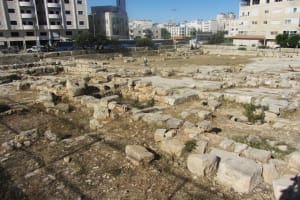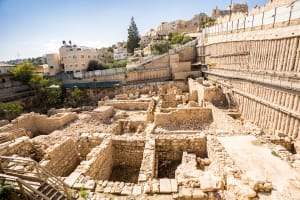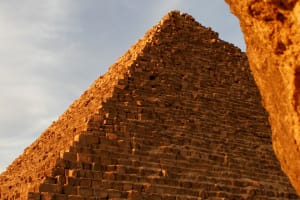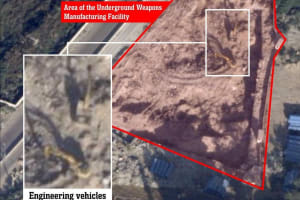Biblical sites represent Israel's largest archaeological discoveries - Exploring Qumran and Dead Sea Scrolls
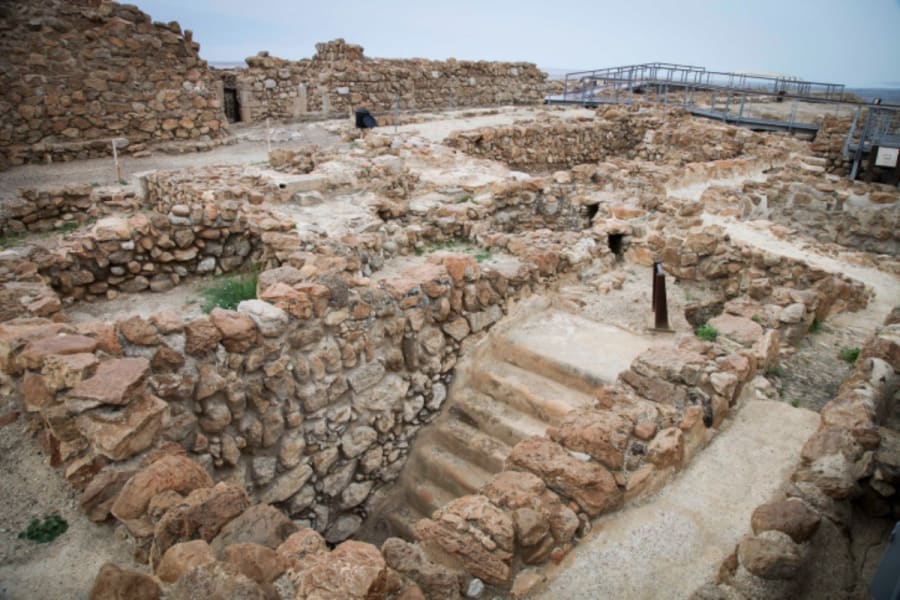
Israel is filled with archaeological sites from the times of the Bible, many of which are only partly excavated. We can assume that many have not been discovered yet, and others never will be. Nevertheless, the sites we know about still have enough 'unexcavated' material to keep archaeologists busy for another century, at least.
In this series, we will examine some of the most important archaeological sites in Israel and learn a bit about the different discoveries found in these places. We will start with Qumran, where the Dead Sea Scrolls were discovered – one of the most important discoveries of the 20th century.
Ever since the founding of “The Palestine Exploration Fund” by the British in 1865, the exploration of the land of Israel has increased our understanding of the Bible, and cast new light on it. The amazing thing is that the discoveries almost always largely confirm the biblical account, and have forced even the greatest skeptics to accept that the Bible is not an entirely unreliable source. Anyone who delves into the details of the academic journals of biblical archaeology will notice the fierce debate between the “minimalists,” who wish to minimize the age of the biblical text, and the “maximalists” who have the opposite idea. A discovery that confirms the biblical account will cause the minimalists try to discard it with a plethora of excuses, which usually evaporate as the research proceeds through the years.
Qumran is located close to the northern tip of the Dead Sea, not far from Jericho. Its ancient name is Skhakha, and it is mentioned in the Book of Joshua 15:61. Qumran was inhabited during the time of Jesus by a sect which, in the scrolls, called themselves the “Yachad.” Most scholars identify them with the Essenes, who are mentioned by both Pliny the elder and Josephus Flavius.
The Essenes were one of the Jewish sects, just like the Pharisees and the Sadducees, but were more conservative. They would dress modestly, probably had Amish-like beards, and wanted to live a radical and simpler life, removed from the hubbub of Jerusalem and the “modern” practices of the Temple that they felt did not correctly follow the commandments of the Torah.

Within numerous caves around Qumran, they found large clay pots with parchment scrolls. So far, they have found 12 different caves. The first one was discovered in 1947, and the latest one in 2017 and there are very likely more undiscovered caves.
Many of the scrolls were of books from the Bible, others were books that are today considered apocrypha, while others belonged to the Yachad community, some more theological, and others practical. Most scrolls are today being held by the Israel Museum in Jerusalem. The scrolls are written in Hebrew, Aramaic and Greek. Most are written on parchment, but there were some papyrus scrolls too, one copper scroll, as well as some inscriptions on clay shards.
What makes this discovery so important? Chiefly the fact that it proves the authenticity of the Bible. The oldest preserved complete manuscript of the Old Testament in Hebrew, the Leningrad Codex, is from 1008 A.D., and is still used as the standard original for almost all Bible translations of the Old Testament, often called “the Masoretic text.”
The Aleppo Codex, which is missing some large parts, is a few decades older. Until the discovery of the Dead Sea Scrolls, people could claim the text had been tampered with over the centuries, that it wasn’t as old as it claimed it was, or even that the ancient Greek translation, the Septuagint, was “more correct” than the Hebrew, because it may have relied upon a “more authentic” older manuscript of the Hebrew Old Testament.
Enter the Dead Sea Scrolls and those discussions are over. Besides a few insignificant details, the Dead Sea Scrolls correspond almost exactly to the Leningrad Codex. The amazing thing is that the Book of Isaiah, for example, was written around 700 B.C. – meaning the Dead Sea Scrolls are closer in time to Isaiah himself than to the Leningrad Codex. People might still dismiss the truth of the Bible but after this discovery, no one can call its authenticity into question.

The Dead Sea Scrolls have parts and pieces of each and every book of the Old Testament, except Esther, and covers about 40% of it. Besides this, parts of Apocryphal books, whose original Hebrew was previously lost, were later found. Some of the scriptures are fragments that archaeologists needed to put together as a puzzle. Many of those puzzles are still unsolved.
Since the Dead Sea Scrolls were first discovered, the excavations have taken one of three forms. One is unearthing the Qumran settlement itself, and pairing it with some of the obscure texts that detail the community rules in order to learn more about the Yachad community; how they lived and what they believed.
The second form of excavation has to do with finding new caves. As mentioned, the last, 12th cave, was discovered as late as 2017. The third is the study of the scrolls, putting together the puzzle, and trying to understand which scroll it is, what it dates back to and whether it’s part of a book of the Bible or not, and in which cultural context the text is from.
What about the New Testament then? Can we find a connection between the Dead Sea Scrolls and early Christianity? Yes, we can. In fact, I can think of three different ways we can see these connections.
The first one is John the Baptist. It’s quite evident that he operated in a similar context to the one in which the Qumran community existed. Some people have theorized that he might have been part of this Yachad sect for a short while before God called him to be the voice in the wilderness. One of the rules of the community specifies that only the people of the inner circle could partake in meals, a position that people would reach after two years. What did the members who hadn’t yet attained that level eat? Presumably wild honey and grasshoppers. Does that ring a bell?
The second one is the papyrus fragment 7Q5. Greek was the lingua franca of the entire Eastern Mediterranean for about 900 years, from Alexander the Great to the Muslim conquest, so it’s not surprising that some of the Dead Sea Scrolls were written in Greek.
One papyrus fragment, 7Q5, has been identified by some scholars to be a fragment from the Gospel of Mark 6:52-53. It’s dated to before the year 50 A.D. so, if this is correct, it’s the oldest fragment of any New Testament text, written in the midst of the events described in the Book of Acts. It’s hard to verify, though, as it only contains a few words, and might just as well be a part of a different text.

The third form of excavation is the cultural context of the “Yachad” being very similar to the context in which early Christianity grew. We can even see a few theological similarities between early Christians and the Essenes, but also some significant differences. For example, they had similar eschatological views, and they disagreed with the Pharisees and the Sadducees on the legitimacy of the centralized Temple services. The Pharisees also emphasized allegiance to the “traditions of the forefathers” which, a few centuries later, would develop into the Oral Law and the Talmud. This was something that Christians and Essenes alike would abhor. On the flip side, the Essenes took the purity laws extremely seriously, and avoided all contact with “heretics,” while Jesus sat with tax collectors and prostitutes. The Essenes retired from society, while Jesus and the early Christians were teaching in the Temple, staying in the midst of society.
The Essenes came to an end around the rebellions against Rome, either when the Romans sacked Jericho in 68 A.D., or during the Bar Kochba Revolt in 132 A.D. This might have been the point at which they hid their scrolls in the caves, hoping to come back to retrieve them one day, which they never did. They preserved these scrolls as an amazing time capsule for us, giving us a glimpse into their lives, their theology, and their scriptures. But there are a few scholars who believe that the Essenes never really disappeared but that they became Ebionites.
The Ebionites, meaning “the poor ones,” is a Judaizing Christian sect that is first mentioned by Irenaeus in 180 A.D. Most of the sources can be traced back to church fathers, who also are confused between them and other groups, making it hard to know exactly who they were and what they believed. They might have been the Judaizers that Paul the Apostle spoke so strongly against in his letters. They didn’t believe in the Divinity of Christ, the Virgin Birth, nor the idea of the substitutionary atonement. They revered the Sermon on the Mount equally to the Torah, rejected Paul as a false prophet, and lived in voluntary poverty.
Since these people appear on the stage of history around the same time as the Essenes disappear, and they seem to share some theological similarities, it isn’t too far-fetched to assume that some of the Essenes might have gone in this direction. At the very least, it looks like some of the Essene theology and ideas must have been adopted by the Ebionites.
The importance of Qumran, in general, and the Dead Sea Scrolls, in particular, cannot be overstated.

They are the most important find of the 20th century, and we are still not done discovering them. They shed light on the context in which the New Testament was written, while vindicating the authenticity of the Old Testament. Until 1947, this amazing 2,300-year-old story was just sitting there, out in the desert, waiting for someone to find it, and now, almost 80 years later, we are still not done unraveling all the secrets of these scrolls.
Next time, we will discuss the amazing excavations in the City of David in Jerusalem and the many layers of history that archaeologists have found there – reaching all the way back to Melchizedek, during the time of Abraham.

Tuvia is a Jewish history nerd who lives in Jerusalem and believes in Jesus. He writes articles and stories about Jewish and Christian history. His website is www.tuviapollack.com
You might also like to read this:



